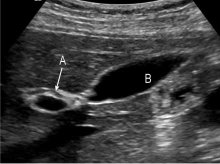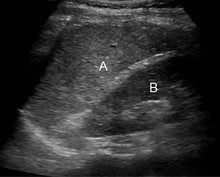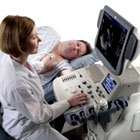Showing posts with label http://www.radiologyinfo.org/en/info.cfm?pg=abdominus. Show all posts
Showing posts with label http://www.radiologyinfo.org/en/info.cfm?pg=abdominus. Show all posts
Monday, July 9, 2007
How should I prepare for the procedure?
You should wear comfortable, loose-fitting clothing for your ultrasound exam. You will need to remove all clothing and jewelry in the area to be examined.
You may be asked to wear a gown during the procedure.
Tell your doctor if you have had a barium enema or a series of upper GI (gastrointestinal) tests within the past two days. Barium that remains in the intestines can interfere with the ultrasound test.
Other preparations depend on the type of ultrasound you are having.
For a study of the liver, gallbladder, spleen, and pancreas, you may be asked to eat a fat-free meal on the evening before the test and then to avoid eating for eight to 12 hours before the test.
For ultrasound of the kidneys, you may be asked to drink four to six glasses of liquid about an hour before the test to fill your bladder. You may be asked to avoid eating for eight to 12 hours before the test to avoid gas buildup in the intestines.
For ultrasound of the aorta, you may need to avoid eating for eight to 12 hours before the test.
What is Abdominal Ultrasound Imaging?
Ultrasound imaging, also called ultrasound scanning or sonography, involves exposing part of the body to high-frequency sound waves to produce pictures of the inside of the body. Ultrasound exams do not use ionizing radiation (x-ray). Because ultrasound images are captured in real-time, they can show the structure and movement of the body's internal organs, as well as blood flowing through blood vessels.
Ultrasound imaging is usually a painless medical test that helps physicians diagnose and treat medical conditions.
An abdominal ultrasound produces a picture of the organs and other structures in the upper abdomen.
A Doppler ultrasound study may be part of an abdominal ultrasound examination.
Doppler ultrasound is a special ultrasound technique that evaluates blood as it flows through a blood vessel, including the body's major arteries and veins in the abdomen, arms, legs and neck
Ultrasound imaging, also called ultrasound scanning or sonography, involves exposing part of the body to high-frequency sound waves to produce pictures of the inside of the body. Ultrasound exams do not use ionizing radiation (x-ray). Because ultrasound images are captured in real-time, they can show the structure and movement of the body's internal organs, as well as blood flowing through blood vessels.
Ultrasound imaging is usually a painless medical test that helps physicians diagnose and treat medical conditions.
An abdominal ultrasound produces a picture of the organs and other structures in the upper abdomen.
A Doppler ultrasound study may be part of an abdominal ultrasound examination.
Doppler ultrasound is a special ultrasound technique that evaluates blood as it flows through a blood vessel, including the body's major arteries and veins in the abdomen, arms, legs and neck
Subscribe to:
Posts (Atom)








